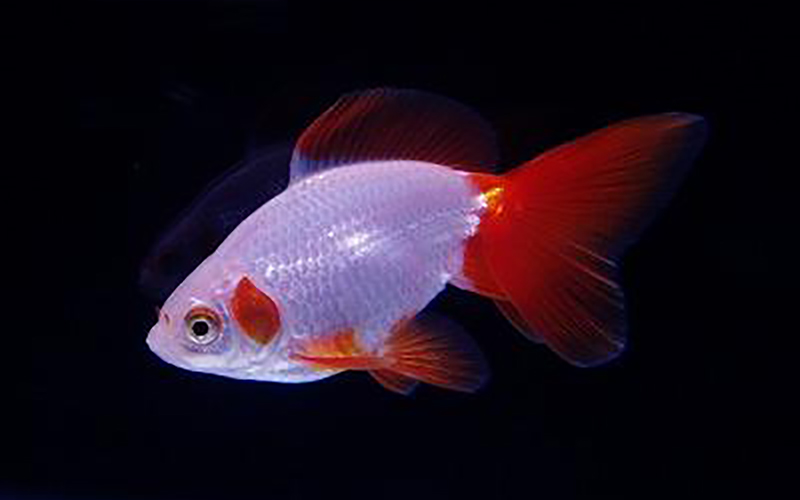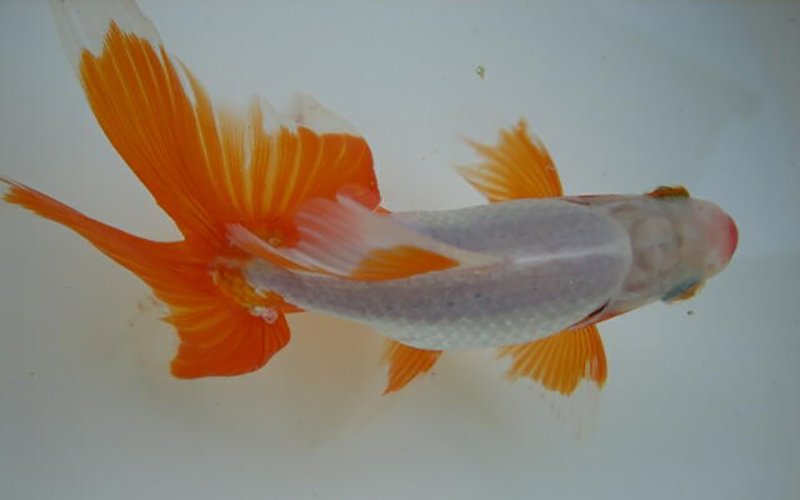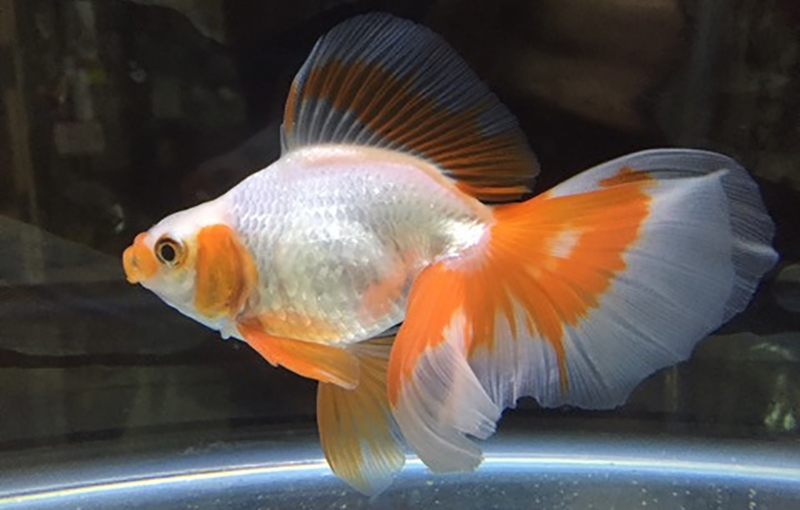ecology
The Tokai Nishiki is a goldfish with a butterfly tail and a body color that inherits the six-scale pattern of the Jikkin. It is a very beautiful goldfish that combines the characteristics of both the jikin and the butterfly tail. In this article, we would like to explain in detail the characteristics of the Tokai Nishiki and how to keep it.
Table of Contents

Tokai Nishiki is,This goldfish has a butterfly tail and its body color inherits the six-scale pattern that the ground metal has.
This breed was created by crossing the jikin, a goldfish that has been bred and preserved in the Nagoya, Aichi Prefecture area for many years, with the butterfly tail. Since it is still a new breed, it is a variety that we are working to improve and maintain its lineage.
Tokai Nishiki is,In 2003 (Heisei 15), we started crossbreeding with Red and White Chintz Butterfly Tail based on Jikin. Therefore, its history as a breed is still young, and there are many enthusiasts who have high expectations for its future.
The Tokai Nishiki was named "Tokai Nishiki" as a new local goldfish of the three Tokai prefectures (Aichi, Gifu, and Mie). Its body color is similar to that of Jikin, with a white base and six reddish scales, and in order to produce this pattern, it must be stripped of its scales just like Jikin. The butterfly tail also produces individuals that resemble the base metal and individuals that have a butterfly tail shape, so it is an ongoing effort to fix this variety for each season.

How to enjoy Tokai Nishiki,It is to enjoy beautiful butterfly tails based on appreciating the reddish six scales as well as normal base metals. If you want to enjoy them, the method of viewing them from the side (side view) in an aquarium or the like is recommended.By viewing them from the side, you can see the tip of the mouth, gill covers, and each fin, which are reddish in color, and enjoy their unique body color and the gorgeous butterfly tail at the same time. For those who wish to focus on the beauty of the butterfly tail, we recommend viewing the upper part of the body.
When mixing goldfish with other goldfish and other species, there is sometimes uncertainty as to what species is good and what species is not. First,There is no general prohibition against this or that when mixing goldfish with other species.Therefore, depending on the personality and environment of the goldfish you keep, even species that are said to be bad for each other may get along well with each other. However, there is also the matter of compatibility between goldfish. If you put incompatible goldfish together, there is a high possibility that they will fight or that only one of them will monopolize the food. However, as I explained in the beginning, there is no prohibition for goldfish to mix with each other, so if you want to mix them, you may do so. Now, I will explain the goldfish that are compatible with Ranchu and those that are not.
The goldfish that are most compatible with Tokai Nishiki are Ryukin-type goldfish such as Ryukin and Demekin.
The Tokai Nishiki is a Wagane type goldfish, but it has a distinctive tail fin, and by mixing it with the Ryukin type goldfish, which also has a distinctive tail fin, you can compare the beauty of its tail fin with other varieties.
Goldfish that are incompatible with Tokai Nishiki are Japanese goldfish, such as Wakin (Japanese goldfish) and Comet (Japanese goldfish).
Many types of Japanese goldfish are agile and grow large in a short period of time. If you wish to mix them with Tokai Nishiki, you should always keep an eye on them to make sure that they are not chasing each other. If left unattended, the butterfly tail, one of the Tokai Nishiki's unique characteristics, may be in danger of being torn to pieces, so if it is chasing you, please separate the container as soon as possible.

Tokai Nishiki is,It is a new breed of goldfish, so its future potential is still unlimited. The ideal Tokai Nishiki is a goldfish with a butterfly tail and six scales. Toward this goal, many goldfish lovers are still working on trial and error.
The amount of Tokai Nishiki in circulation is very small. If you are interested in breeding them, it is a good idea to ask a specialty store or ask a Tokai Nishiki preservation society or an association of lovers of Tokai Nishiki.